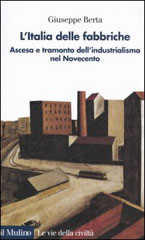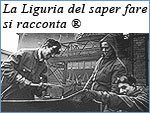|
|
|
 |
reviews |
 |
 |
 |
 |
 |
 |
 By the end of the nineteenth century, the Italian industrial scenario of factories and shop floors no longer existed. Giuseppe Berta begins his book—which reads like a novel—with this affirmation. Berta’s work is a sort of atlas of experiences and the subcultures that described Italian industrialism in terms of the central role of the “big factory” and of “production locations” where grand political projects for social change germinated. The book is divided in three parts: the first examines the archetypes of industrialism, the American myth and Fordism engineering; the second is centered on the role of Confindustria, Intersind, Olivetti and of the new Cisl syndicalism defined as Christian laborism. The third part narrates Italian industrialism’s long decline, the experience of the industrial districts and the rise of the medium-size enterprise. The author focuses particular attention on the leaders and the protagonists of the rise of Italian industrialism: from Adriano Olivetti to Enrico Mattei, from Vittorio Valletta to Angelo Costa and Giuseppe Glisendi. By the end of the nineteenth century, the Italian industrial scenario of factories and shop floors no longer existed. Giuseppe Berta begins his book—which reads like a novel—with this affirmation. Berta’s work is a sort of atlas of experiences and the subcultures that described Italian industrialism in terms of the central role of the “big factory” and of “production locations” where grand political projects for social change germinated. The book is divided in three parts: the first examines the archetypes of industrialism, the American myth and Fordism engineering; the second is centered on the role of Confindustria, Intersind, Olivetti and of the new Cisl syndicalism defined as Christian laborism. The third part narrates Italian industrialism’s long decline, the experience of the industrial districts and the rise of the medium-size enterprise. The author focuses particular attention on the leaders and the protagonists of the rise of Italian industrialism: from Adriano Olivetti to Enrico Mattei, from Vittorio Valletta to Angelo Costa and Giuseppe Glisendi.
Numerous changes that took place following the First and Second World Wars. Giovanni Mandelli appears as an exemplary figure. He was a militant socialist who, having adhered to Gramsci’s communism, opened a small workshop, with three fellow smelters, in Borgo San Paolo, the historical working-class area of Turin. His son Walter became chairman of Federmeccanica in 1973.
Another striking figure is Riccardo Gualino who, despite his upper middle class origins, refused to bend to Facism and, consequently, was interned in Lipari where he wrote a novel centered on the 1929 crisis and on the mythical figure of Henry Ford. Relations with the Fascist regime created a rather strange working environment for the young engineers of FIAT. They were so tied up with work that they were completely indifferent to the huge mobilizations of that time even if, in 1936, the launching of the Topolino, designed by Dante Giacosa, turned into a great popular festival. Another breeding ground of social innovation was the FIAT vocational school where, from the post war period until the beginning of the 1970s, more than 8000 students were selected to participate in a unique (for that time) program, alternating school and the shop floor in their eight hour days.
Giuseppe Berta takes particular note of a frequently underestimated entrepreneur, Angelo Costa from Genoa, chairman of Confindustria from 1945 to 1955: he is defined as a rigorous free trader and negotiator who, in a period of fervent idealism, strove to persuade by sheer strength of reason. Costa opposed the management meetings proposed by the Left, but at the same time criticized the Americans’ desire to generalize their Fordist model. Costa proposed to boost workers’ buying power in order to strike at the presence of communists in the factories, at the very root of their ideology.
Regarding Confindustria’s positions, Adriano Olivetti swam against the tide and in 1950, through a referendum among the workers; he ratified the statute of his management that would last until 1967. Among his collaborators there were legendary personalities in the field of social sciences and culture: Franco Momigliano, Ottiero Ottieri, Franco Fortini, Franco Ferrarotti, Geno Pampaloni, Alessandro Pizzorno, and Paolo Volponi.
In analyzing the Cisl labor unionist experience, Berta claims that the real innovation of Giulio Pastore and Mario Romani’s labor lies in the systematic comparison with industrial modernity.
The comparison of the two models Cgil-Cisl is explained as follows: in the perspective of Cgil, “enterprise” is not considered; there is “industry”, “capital and “work”. However, enterprise –that is, the efficient organization of the factors of production is notably absent, whereas the Cisl perspective admits the necessity for enterprise in order to plan an industrial future for Italy according to a Western model.
For the present and the future, Berta concentrates his attention on three fundamental issues. On the one hand, he seems to agree with the greatest expert of industrial districts of the small business (Giovanni Beccattini). On the other hand, he mentions Marcello de Cecco who affirms that by supporting industrial districts, it is easy to forget that without the big factory there is no research and, consequently, no strategic perspectives. The positive side of districts certainly lies in the fact that cooperation prevails over the hierarchy and the joint responsibility in the productive process. In the industrial district, it is the social system that creates a sense of participation in the future of the business.
When analyzing the results of the surveys conducted by Mediobanca and Unioncamere on the vitality of the medium size business (from 50 to 499 employees), Berta seems to be more willing to speak of an economic and productive change than of an Italian industrial decline. The future is for “pocket multinationals” and for a “fourth capitalism”.
I would propose a deeper analysis on this last statement as, referring to the above-mentioned surveys, it is noticeable that only 4% of products “made-in-Italy” - especially light mechanics, food products, household and personal goods – comes from high-technology fields. The innovation is high especially in the aspects concerning commercial organization (sales network, advertising) and in the product policy, with a strong differentiation of products, brands and design.
|
 |
|
| |
|
 |
 |
review |
|
|
|
|
 |

